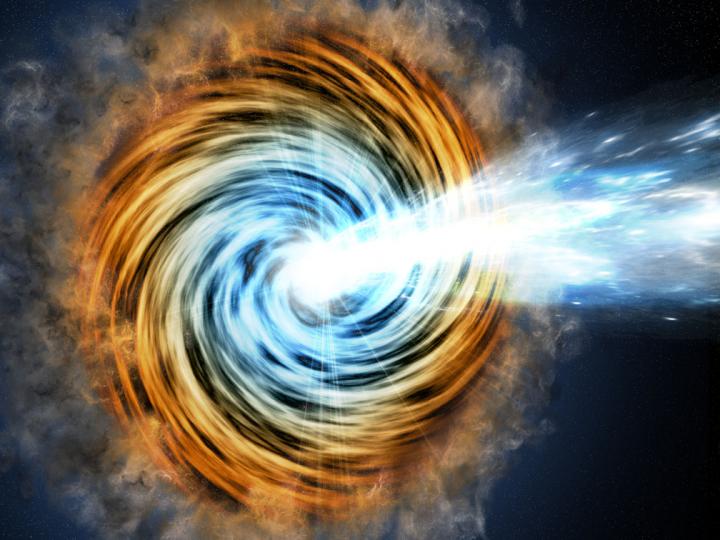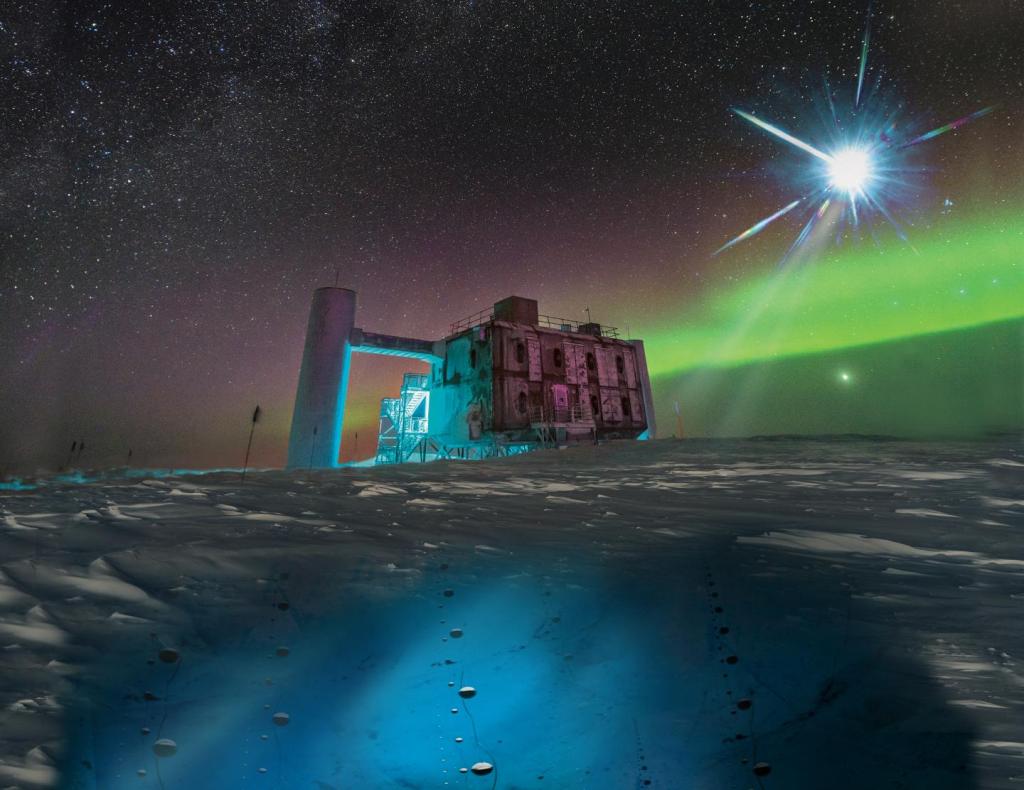For the first time ever, scientists tracked the journey of a high-energy neutrino—sometimes called the “ghost particle” because it’s extremely hard to detect—back to its original source. This discovery represents a major breakthrough in a mystery that has eluded scientists for over a century: Where do these bizarre particles come from, and why are they so juiced up on cosmic energy?
The IceCube Neutrino Observatory, located in Antarctica, has produced the first concrete answer to those questions: Neutrinos can be accelerated to near light-speed by a special kind of compact galactic center called a blazar. Blazars are thought to be powered by supermassive black holes, and they are one of the most energetic phenomena observed in the universe.
Videos by VICE

The IceCube team announced their findings on Thursday at a press conference at the National Science Foundation in Washington, DC, and authored two new Science papers about the research.
Neutrinos are weird particles with very low masses—so low that the 2015 Nobel Prize in Physics was awarded for proving they have any mass at all. Because of this ability, they can travel through the universe basically undisturbed, unlike heavier particles that are warped or stopped by planets, stars, and other objects. This makes them potentially useful for probing cosmic enigmas that can’t be observed with traditional light-based astronomy.
Much like the detection of gravitational waves, which requires extraordinarily precise instruments, neutrinos are tough to capture due to their spectral nature. The IceCube observatory, a collaboration of more than 300 scientists from 12 countries led by the University of Wisconsin-Madison, is designed to detect high-energy neutrinos with “deep-core strings,” sensors that stretch nearly three kilometers (about two miles) into the Antarctic ice.
Even though trillions of neutrinos pass through our bodies every second, these trip-wires have only captured around a hundred of the high-energy cosmic neutrinos that originate beyond the solar system. That’s how difficult it is to even sniff out a trace of these particles.

One of the detected cosmic neutrinos, named IceCube-170922A, was flagged by the observatory on September 22, 2017. Because neutrinos don’t seem particularly bothered by massive objects, passing right through them, it’s easier to guess where they might have originated by looking in the direction they came from.
When IceCube put out an alert to scan the patch of sky in the constellation Orion where this neutrino likely originated, more than a dozen observatories answered the call, including Neil Gehrels Swift Observatory, Fermi Gamma-Ray Space Telescope, the Nuclear Spectroscopic Telescope Array, and the Very Energetic Radiation Imaging Telescope Array System.
Scientists hoped these follow-ups might reveal a likely source for the cosmic neutrinos, and in the case of IceCube-170922A—which was pumped up with 300 trillion electron volts—they finally did.
Together, the institutions pinpointed gamma-ray flares from a blazar called TXS 0506+056, located four billion light years from Earth, and concluded it was the probable source of the accelerated neutrino. This is significant not only as a milestone in neutrino astronomy, but as a victory for “multi-messenger astronomy,” the term for discoveries made with multiple lines of astronomical evidence.
Read More: Scientists Have Detected an Entirely New Type of Gravitational Wave
Combining these back-to-back observations of neutrinos and gamma rays “was the key here,” co-author Gary Hill, a physicist at the University of Adelaide and member of the IceCube Collaboration, told me in an email.
When I asked how the IceCube team will build on this achievement, Hill said that it will be essential to keep tabs on the blazar to see if other neutrinos can be traced to its gamma-ray emissions. “If it flares again, and we see more neutrinos—that’s a big thing,” he noted. The team will also search for other blazars that might be accelerating neutrinos toward Earth.
Hill also hopes that this discovery will result in more investment in IceCube, which can be updated to be even more sensitive to these ghostly neutrino visitors. “We could add more strings into the ice, which would increase detection rates, and add detectors over the surface of the ice,” he said. That “would help screen out background particles from cosmic rays hitting the Earth’s atmosphere, allowing us to see more of the interesting neutrinos from the distant universe.”
Get six of our favorite Motherboard stories every day by signing up for our newsletter .




